Project publications
The ECO-Ready project partners are engaged in publishing about ECO-Ready results in journals, reports, conference proceedings, newsletters and other sources.

A directory of datasets for mining software repositories
(Themistoklis Diamantopoulos, Andreas L. Symeonidis)
Abstract. The amount of software engineering data is constantly growing, as more and more developers employ online services to store their code, keep track of bugs, or even discuss issues. The data residing in these services can be mined to address different research challenges; therefore, certain initiatives have been established to encourage sharing research datasets collecting them. In this work, we investigate the effect of such an initiative; we create a directory that includes the papers and the corresponding datasets of the data track of the Mining Software Engineering (MSR) conference.
Data, 2025, 10(3), 28;
DOI
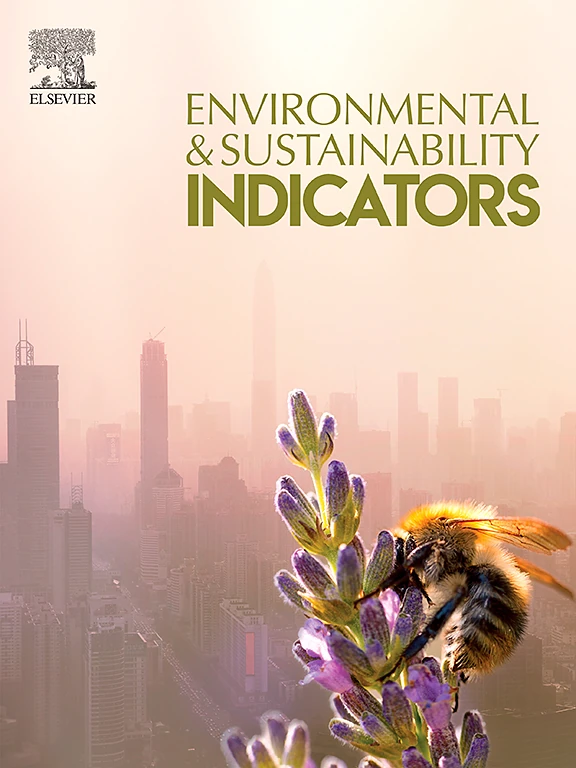
From local to global and from global to local: Designing the protocol to model agriculture and climate resilience
(Jana Poláková, Vera Potopova, Zuzana Smeets Kristkova, Jeroen Weststrate, Willem-Jan van Zeist, Annabel Oosterwijk, Michaela Kolárová, Marcos Dominguez Viera, Pavel Zahradnícek, Petr ŠtŠepánek, Nils Bunnefeld, Markus Dettenhofer, Ioannis Manikas)
Abstract. Agriculture is an essential factor in the climate-food-biodiversity nexus, affecting climate resilience and, ulti-
mately, whether we achieve the global Sustainable Development Goals. This study aimed to investigate the local-
global interaction by integrating sustainability indicators with three modelling methods to address agriculture
and climate resilience. The novelty of this research lies in its innovative methodology, which employs locally
sourced indicators to integrate with climate and crop growth models (DSSAT, local biophysics), fed into large-
scale equilibrium models (MAGNET, global economics) and Life-Cycle Assessment tools (LCA, environmental
feedback). This enables precise mapping and analyzing regions that are most and least vulnerable to climate
change, which is crucial for informing policymakers. Additionally, the novel methodology has incorporated focus
groups to design a set of indicators that are compatible with typological input data for the modelling protocol.
Our methodology quantified the impact of heat, drought, CO2, and extreme weather conditions on local yield
changes. This approach uniquely combined regional-level data with five types of indicators: farming practices,
water, climate/soil, biodiversity, and economics. Focus groups were instrumental in the process of gathering,
selecting, and fine-tuning indicators, identifying gaps, and areas where policies should be tailored and targeted.
This innovative work represents a significant step forward for evidence-based policy-making and allows us to
emphasize the role of “local-to-global” feedback in scaling up models. It demonstrates how localized climate
extremes can disproportionately influence the stability of global wheat production. It is important to highlight
that biodiversity indicators are significantly missing from the large-scale modelling of the climate-food-biodiversity nexus.
Environmental and Sustainability Indicators, Volume 27, September 2025, 100855
DOI
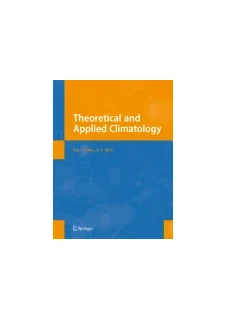
Integrating the DSSAT cropping system model and regional climate models to optimize winter oilseed rape, tomato, and bell sweet pepper production in the Czech Republic
(Vera Potopová · Rafique Ahasan Chawdhery · Nina Muntean · Trifan Tudor · Pavel Zahradníček · Petr Štěpánek · Josef Soukup · Petr Zehnálek)
Abstract. Integrated modelling of climate change impacts in the soil–plant–atmosphere system can improve agroecosystem resilience
and resource use efficiency. For the research on tomato (Solanum lycopersicum L.), bell sweet peppers (Capsicum annuum L.),
and winter oilseed rape (Brassica napus L.), the CSM-CROPGRO-Tomato, CSM-CROPGRO-Papper and CSM-CROPGROCanola
models were used as an example for Central European environment, including the Czech Republic. Their outputs
were validated using an extensive experimental field dataset with contrasting climates and soils. The CSM-CROPGROCanola
model has tested the three-winter oilseed rape (WOSR) varieties from three experimental sites. To identify the most
promising agronomic adaptation strategies for thermophilic vegetables (VEG) in open-field growing conditions, the ability
of the CSM-CROPGRO-Tomato and CROPGRO-Papper models have been tested. To assess the risk of compound climate/
weather events (CEs) for WOSR production and the most promised areas with technical ripening of fruit tomatoes and sweet
peppers, the ensemble of the Regional Climate Models for 2001–2020, 2021–2040 and 2041–2060 have been used. We found
that linking the CSM-CROPGRO system with an ensemble of climate models is a reliable tool for testing new varieties of
WOSR and VEG and assessing their suitability for future climate change.
Theoretical and Applied Climatology, 156 (2025), 82
DOI

Getting (ECO)Ready: Does EU Legislation Integrate Up-to-Date Scientific Data for Food Security and Biodiversity Preservation Under Climate Change?
(Luciana Di Gregorio, Lorenzo Nolfi, Arianna Latini, Nikolaos Nikoloudakis, Nils Bunnefeld, Maurizio Notarfonso, Roberta Bernini, Ioannis Manikas and Annamaria Bevivino)
Abstract. European policies on climate change (CC), food security (FS), and biodiversity (BD) represent the EU’s commitment to a sustainable agri-food system, highlighting the interdependence between environmental health and food security. By analyzing key drivers and indicators, the present study evaluates the effectiveness of existing measures and identifies gaps in the policy framework. A Scoping Group activity facilitated dialogue between policymakers, industry, and farmer representatives to gather feedback and strengthen the data–policy link. The results highlight progress in areas such as promoting sustainable agriculture and biodiversity, while pointing out unresolved issues like the challenges faced by smallholder farmers. The study emphasizes the need for real-time monitoring tools and tailored solutions to address the complexities of the agri-food system. It also encourages the integration of emerging technologies, such as IoT and AI, to enhance the sustainability of agricultural practices. Ultimately, the findings call for a landscape-specific approach to maximize biodiversity gains, mitigate climate impacts, and ensure food security within the broader context of the EU’s ecological and socio-economic challenges.
Sustainability 16 (2024), 10749;
DOI
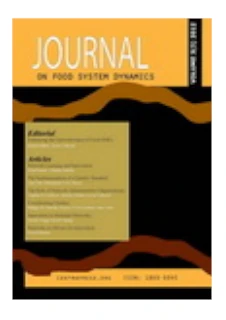
Combining process efficiency with process flexibility: The promise of artificial intelligence
(G. Schiefer)
Abstract. Artificial intelligence may not just provide information services but could also have a major impact on the organization of planning processes, adding higher levels of flexibility to efficiency. Apart from AI’s information services, the added value of flexibility may especially support processes that are confronted with high variabilities as, e.g. processes dealing with risk management and contingency planning.
International Journal on Food System Dynamics, 14 (2024), pp 342-343.
DOI
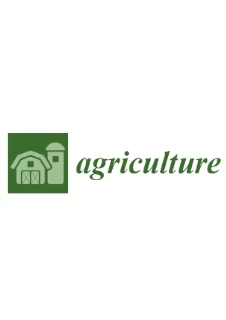
Water Consumption by Livestock Systems from 2002–2020 and Predictions for 2030–2050 under Climate Changes in the Czech Republic
(V. Potopová, M. Musiolková, J.A. Gaviria, M. Trnka, P., E. Boere, T. Trifan, N. Muntean, M.R.A. Chawdhery)
Abstract. The livestock system in Europe relies on a complex holistic equilibrium that is the outcome of an interplay of demand, market, crop production, livestock production, land use, water availability, and other factors. When modeling future scenarios of water consumption by livestock systems, the most suitable tools result from the interconnectivity of growth models, economic models, and climate models. We integrated the Environmental Policy Integrated Climate growth model (EPIC), animal-level model (RUMINANT), economic model (Global Biosphere Management Model, GLOBIOM), EURO-CORDEX climate models, and regression models. This study developed novel livestock production scenarios for individual regions of the Czech Republic with estimations of the categories of livestock that have been bred during the last 20 years and will be bred in the future and what their water consumption will be, both throughout the year and in particular seasons. First, the numbers of farm animals, namely, cattle, pigs, sheep, horses, goats, and poultry in 2002–2020 were evaluated, and their numbers were predicted for the following years until 2050. Second, livestock water consumption per region was determined based on the number of livestock individuals. Third, changes in the amount of water consumed by livestock per year in individual regions in 2050 compared to 2005 were estimated.
Agriculture 13 (2023): 1291.
DOI

Employing Source Code Quality Analytics for Enriching Code Snippets Data
(Thomas Karanikiotis, Themistoklis Diamantopoulos, Andreas Symeonidis)
Abstract. The availability of code snippets in online repositories like GitHub has led to an uptick in code reuse, this way further supporting an open-source component-based development paradigm. The likelihood of code reuse rises when the code components or snippets are of high quality, especially in terms of readability, making their integration and upkeep simpler. Toward this direction, we have developed a dataset of code snippets that takes into account both the functional and the quality characteristics of the snippets. The dataset is based on the CodeSearchNet corpus and comprises additional information, including static analysis metrics, code violations, readability assessments, and source code similarity metrics. Thus, using this dataset, both software researchers and practitioners can conveniently find and employ code snippets that satisfy diverse functional needs while also demonstrating excellent readability and maintainability.
Data, 8 (2023): 140
DOI

Towards Readability-Aware Recommendations of Source Code Snippets
(Athanasios Michailoudis, Themistoklis Diamantopoulos, Andreas Symeonidis)
Abstract. Nowadays developers search online for reusable solutions to their problems in the form of source code snippets. As this paradigm can greatly reduce the time and effort required for software development, several systems have been proposed to automate the process of finding reusable snippets. However, contemporary systems also have certain limitations; several of them do not support queries in natural language and/or they only output API calls, thus limiting their ease of use. Moreover, the retrieved snippets are often not grouped according to the APIs/libraries used, while they are only assessed for their functionality, disregarding their readability. In this work, we design a snippet mining methodology that receives queries in natural language and retrieves snippets, which are assessed not only for their functionality but also for their readability. The snippets are grouped according to their used API calls (libraries), thus enabling the developer to determine which solution is best fitted for his/her own source code, and making sure that it will be easily integrated and maintained. Upon providing a preliminary evaluation of our methodology on a set of different programming queries, we conclude that it can be effective in providing reusable and readable source code snippets.
Proceedings of the 18th International Conference on Software Technologies ICSOFT, 1 (2023): 688-695, SciTePress, Rome, Italy
DOI

Towards Interpretable Monitoring and Assignment of Jira Issues
(Dimitrios-Nikitas Nastos; Themistoklis Diamantopoulos Andreas Symeonidis)
Abstract. Lately, online issue tracking systems like Jira are used extensively for monitoring open-source software projects. Using these systems, different contributors can collaborate towards planning features and resolving issues that may arise during the software development process. In this context, several approaches have been proposed to extract knowledge from these systems in order to automate issue assignment. Though effective under certain scenarios, these approaches also have limitations; most of them are based mainly on textual features and they may use techniques that do not extract the underlying semantics and/or the expertise of the different contributors. Furthermore, they typically provide black-box recommendations, thus not helping the developers to interpret the issue assignments. In this work, we present an issue mining system that extracts semantic topics from issues and provides interpretable recommendations for issue assignments. Our system employs a dataset of Jira issues and extracts information not only from the textual features of issues but also from their components and their labels. These features, along with the extracted semantic topics, produce an aggregated model that outputs interpretable recommendations and useful statistics to support issue assignment. The results of our evaluation indicate that our system can be effective, leaving room for future research.
Proceedings of the 18th International Conference on Software Technologies ICSOFT, 1 (2023): 696-703, SciTePress, Rome, Italy.
DOI
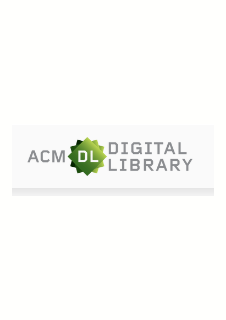
Write me this Code: An Analysis of ChatGPT Quality for Producing Source Code
(Konstantinos Moratis, Themistoklis Diamantopoulos, Dimitrios-Nikitas Nastos, Andreas Symeonidis)
Abstract. Developers nowadays are increasingly turning to large language models (LLMs) like ChatGPT to assist them with coding tasks, inspired by the promise of efficiency and the advanced capabilities they offer. However, this raises important questions about the ease of integration and the safety of incorporating these tools into the development process. To investigate these questions, this paper examines a set of ChatGPT conversations. Upon annotating the conversations according to the intent of the developer, we focus on two critical aspects: firstly, the ease with which developers can produce suitable source code using ChatGPT, and, secondly, the quality aspects of the generated source code, determined by the compliance to standards and best practices. We research both the quality of the generated code itself and its impact on the project of the developer. Our results indicate that ChatGPT can be a useful tool for software development when used with discretion.
MSR '24: Proceedings of the 21st International Conference on Mining Software Repositories, 2024, pp 147-151.
DOI

Semantically-enriched Jira Issue Tracking Data
(T. Diamantopoulos, D.-N. Nastos, A. Symeonidis)
Abstract. Current state of practice dictates that software developers host their projects online and employ project management systems to monitor the development of product features, keep track of bugs, and prioritize task assignments. The data stored in these systems, if their semantics are extracted effectively, can be used to answer several interesting questions, such as finding who is the most suitable developer for a task, what the priority of a task should be, or even what is the actual workload of the software team. To support researchers and practitioners that work towards these directions, we have built a system that crawls data from the Jira management system, performs topic modeling on the data to extract useful semantics and stores them in a practical database schema. We have used our system to retrieve and analyze 656 projects of the Apache Software Foundation, comprising data from more than a million Jira issues.
2023 IEEE/ACM, 20th International Conference on Mining Software Repositories (MSR), Melbourne, Australia, 2023, pp. 218-222
DOI